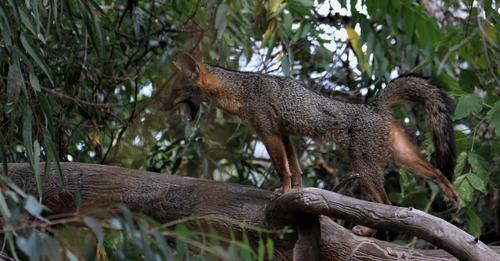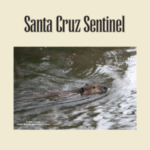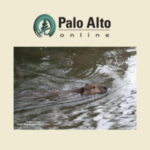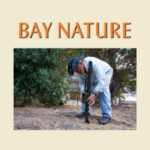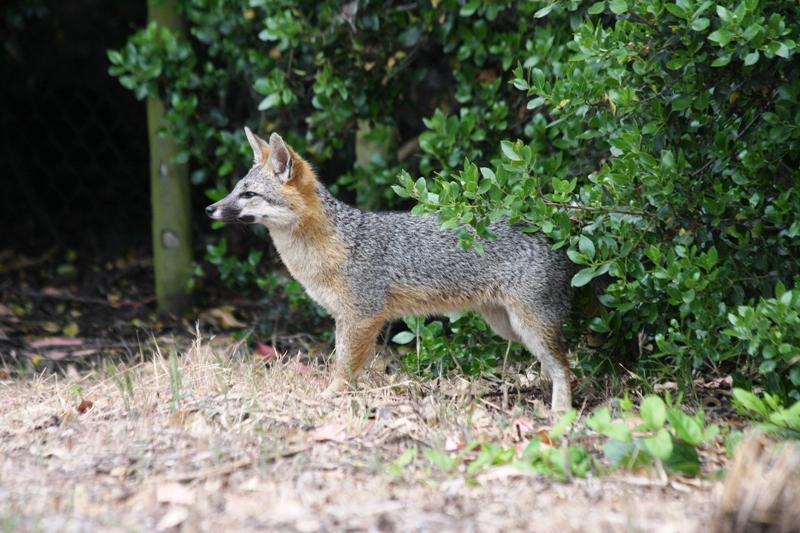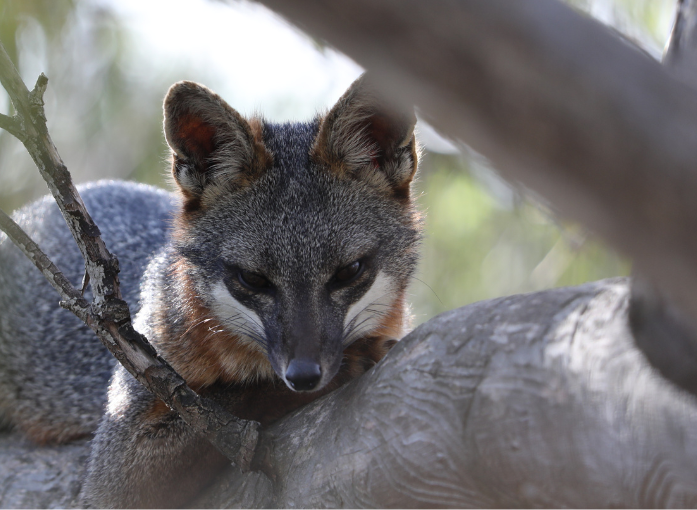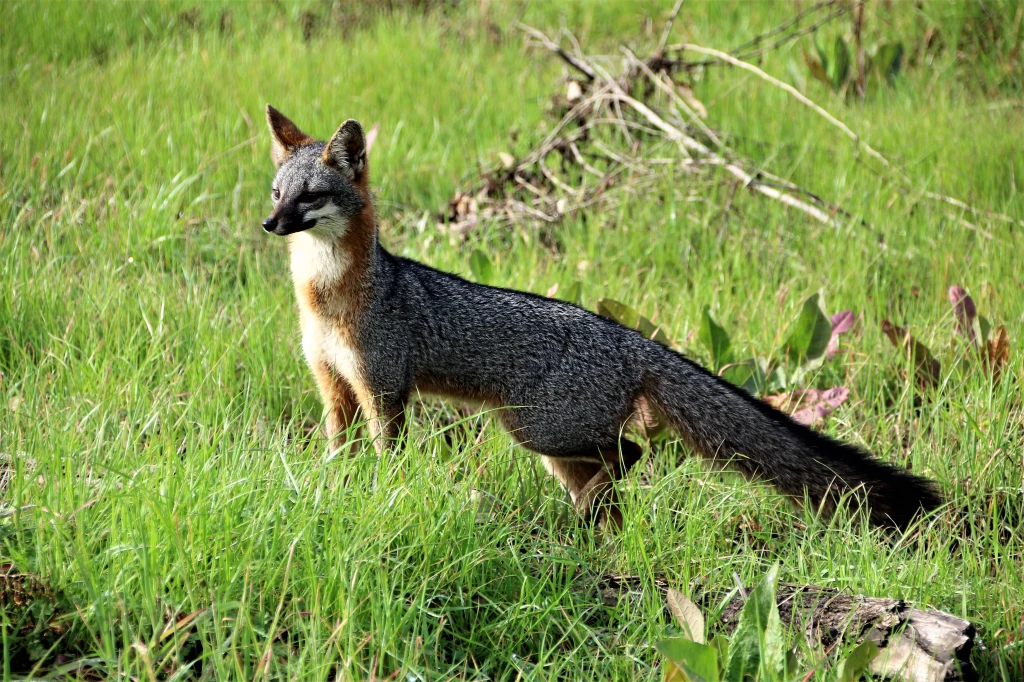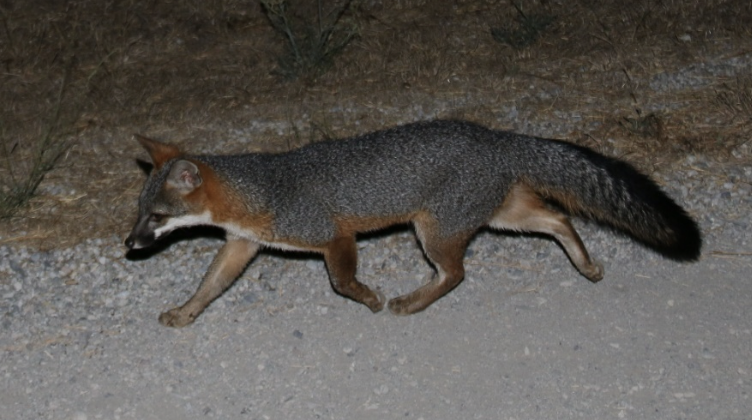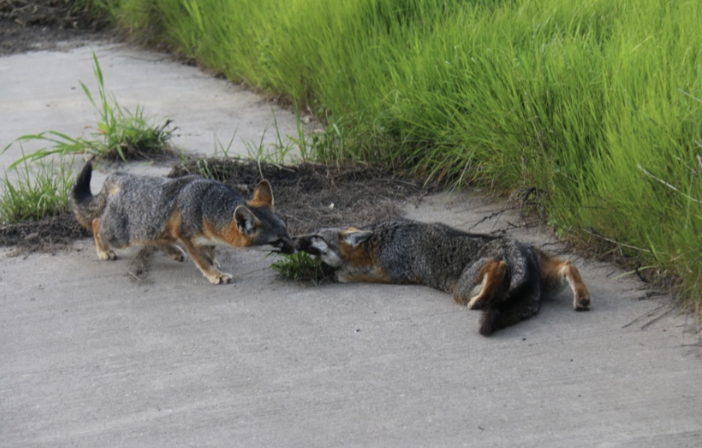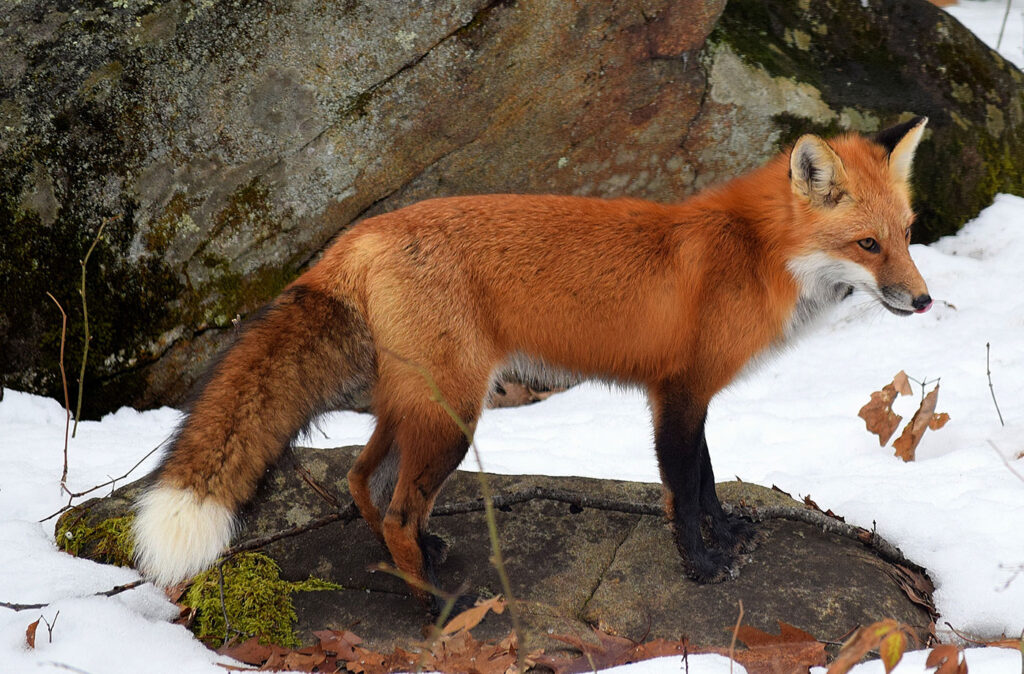Circadian Rhythms & Stinky Poo
by William C. Leikam
President, CEO & Co-founder, Urban Wildlife Research Project
Circadian Rhythms:
Most of us assume that for an animal to be nocturnal is an innate behavior. In short, they are born knowing that they are up and about during the night when it is dark — but when light outside, that’s the time to curl up and fall sleep. “Circadian rhythms are 24-hour cycles that are part of the body’s internal clock, running in the background to carry out essential functions and processes. One of the most important and well-known circadian rhythms is the sleep-wake cycle.” (Sleep Foundation)
Circadian rhythms exist in all types of organisms. For example, they help flowers open and close at the right time and keep nocturnal animals from leaving their shelter during the daytime when they would be exposed to more predators.
I got my first introduction to this question toward the end of April 2013 when on one of our trail cameras I saw Gray the male and father of four pups was out with his two-week-old pups in the middle of the morning. This repeated itself for about another week when suddenly one morning only one pup showed up and the following day none of the pups showed in daylight hours until they dispersed in November. This was likely no different than what we parents who have had children go through. We had to teach our kids that you are awake in the day, and you are asleep at night.
There appears to be no such thing as an innate circadian rhythm of day-night when it comes to humans, gray foxes and other wild critters.
The Importance of Stinky Poo (Part One):
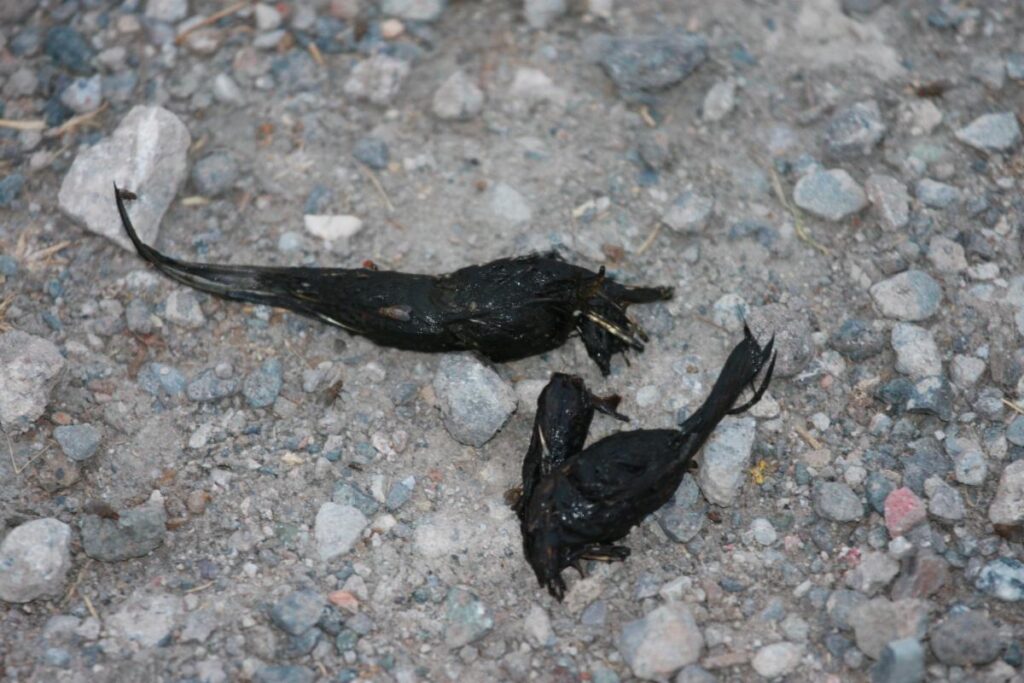
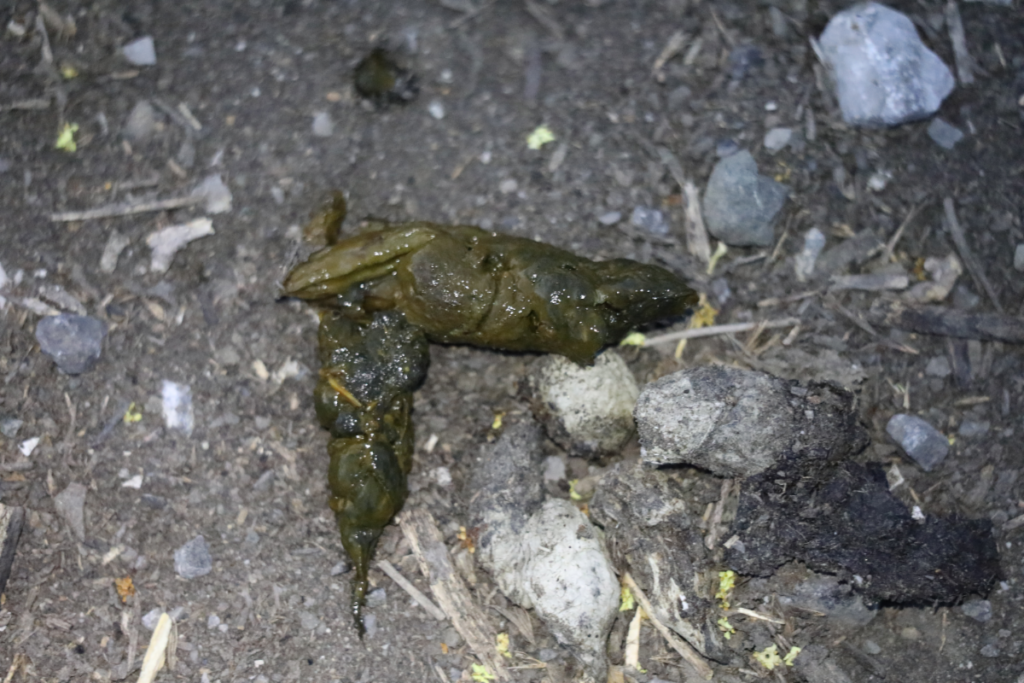
An email dropped into my inbox from a woman in Bellingham, Washington. In that email she complained about the resident gray foxes that had taken up lodging under her outdoor deck. She said that before the foxes moved in, she always enjoyed sitting on her deck and reading. She wrote, “That’s no longer possible. These foxes, the adults and their young ones are pooping all over my backyard and I can’t stand the smell. How do I get rid of these foxes?”
Their scat has a piercing odor with an underlying musky smell. In my July 2022 Gray Fox Report, I touched upon this scat issue. Therein I wrote, “Gray foxes defecate at will. They do not have to wait for that “urge.” That’s the reason why sometimes I come across tubular, sometimes gnarly, twisted scat that is small. This indicates that since they defecate at will, they sometimes don’t have much to give and so the scat is small — but when their body is full, the scat is far more robust at about 22 millimeters or roughly a half to three quarters inch in diameter.
Once one knows the distinct odor of gray fox scat, it is unmistakable. This odor is important in that it carries information out across the landscape. For instance, scat placed in the middle of the road/trail is an important home range marker. The information carried within that scat is that this territory belongs to, in this case, Big Eyes and her mate Laimos.
But why did evolution make their scat so stinky and why do they choose to defecate on high places like a large rock? More on this question in next month’s Gray Fox Report.
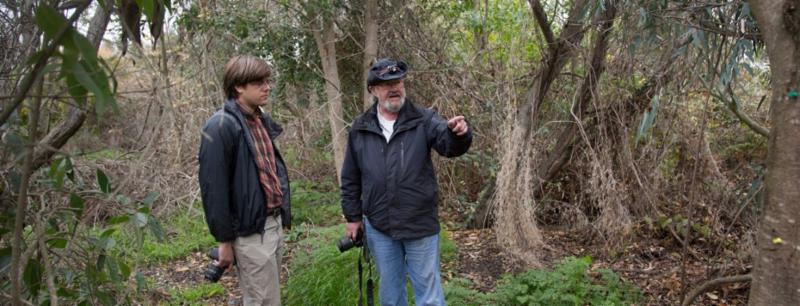
I. Gray Fox Population & General Health
As of this date, we have two adult gray foxes living in the Palo Alto Baylands Nature Preserve. These two foxes appear to be in good health. There is no indication in their scat that anything internal is breaking down.
However, Laimos is head-shaking once again. I’m not sure what that all means. It seems to come on at only this time of year.
II. UWRP News & Updates
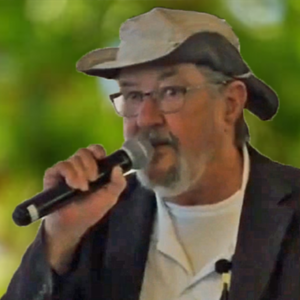 Upcoming Event at Safari West
Upcoming Event at Safari West
On August 19, Santa Rosa, CA residents are invited to join Bill Leikam “The Fox Guy” at Safari West for an engaging multimedia lecture to experience the secret lives of gray fox pups as they learn how to survive in their ever-changing world. Please let him know that you are in the audience!
 The ‘Triggered By Motion’ Experience
The ‘Triggered By Motion’ Experience
The UWRP is excited to present our newest video documentary featuring Bill Leikam’s participation in the global research project “Triggered By Motion”, a world-wide exhibit of citizen scientists from 21 locations using camera traps to learn about local urban wildlife. Join Bill on his journey between California and Zürich, Switzerland, as he experiences the breathtaking exhibition in person!
The UWRP has just launched a brand new website, courtesy of Milena at DesignerForChange. Please visit us at our new domain, urbanwildliferesearchproject.org (not .com!) to stay in the loop on our conservation activity, event announcements, and updates about gray foxes Big Eyes and Laimos in the Palo Alto Baylands.
Today, Bill is the world’s leading authority on the gray fox. This book is an account of his experiences among the gray foxes of the Baylands, a tale of life and death, of growth and loss. Stay for a while and go exploring with the Fox Guy. Find it today at Barnes & Noble or DiAngelo Publications.
 Coming soon:
Coming soon:
Look forward to an upcoming interview between Bill and Dr. Annabelle Dufourcq, associate professor of metaphysics and philosophical anthropology, philosophy, theology and religious studies at Radboud University Nijmegen, The Netherlands — for a project of hers on ethology.
Read more about UWRP in the news:
III. UWRP Research Objectives
Within the permit that allows the Urban Wildlife Research Project to conduct its study of the behavior of the gray fox at the Palo Alto Baylands Nature Preserve, the objectives covered area:
Monitoring of urban gray fox denning sites in Palo Alto Baylands: This is being accomplished during the period when the gray foxes use a den site. It is one of the prime locations for gathering most of the behavioral data of the litter and for adults alike.
Assessment of status and population trends of Baylands urban gray foxes: Since January 2019 a pair of resident gray foxes have claimed territory at the Palo Alto Baylands Nature Preserve.
Identification of habitat features that promote the presence of urban gray foxes: After considering this and talking with people who know how to restore habitats, we need to assess what kinds of plants, including the Alkaline Saltbush, would grow best along the edge of the saltwater channel and alongside the marsh. We need to grow a permanent habitat that contains the corridors and plant it as soon as possible. We’ll keep an eye on this as this is a critical link between the southern region of the Baylands and the northern region.
Assessment of reproductive success and identification of factors that promote successful reproduction: Open the pinch-point along Matadero Creek by developing thickets that link one area to another, instead of the present “islands”.
Identification and assessment of possible dispersal travel routes: Dispersal routes move between the Palo Alto Baylands Nature Preserve and the Shoreline region over in Mountain View. In a north-westerly direction the dispersal corridors run just behind the homes bordering the marshlands.

